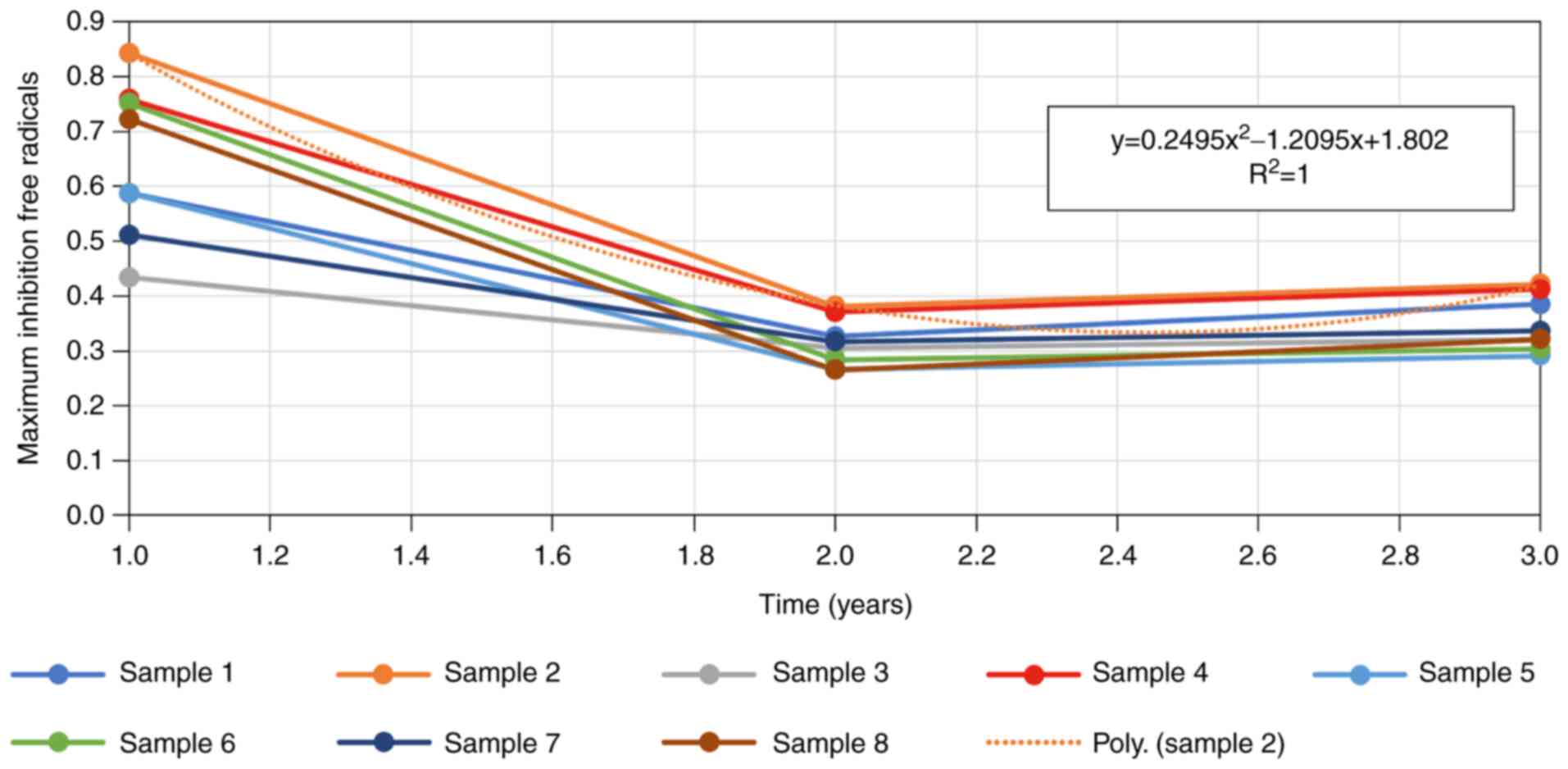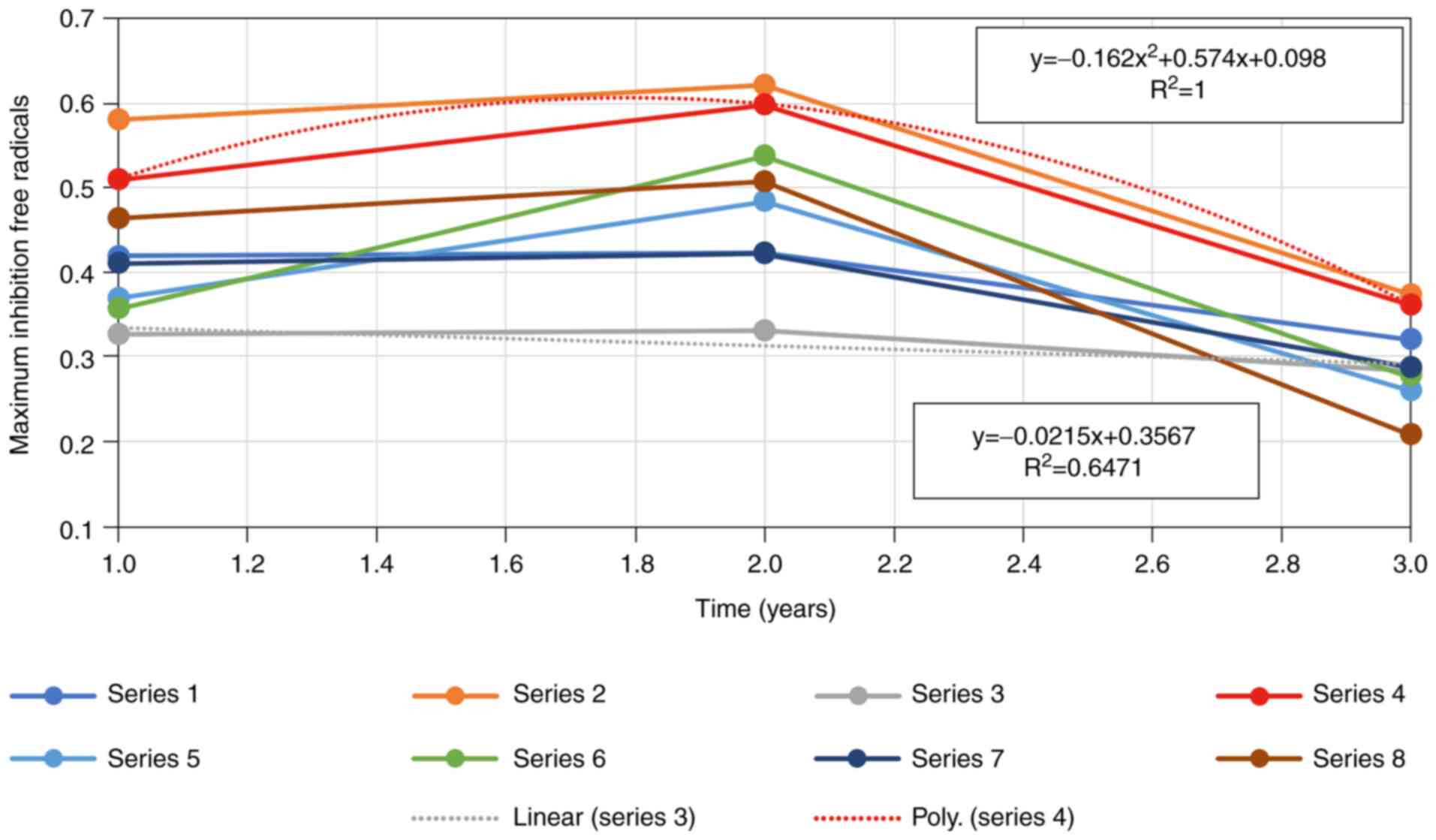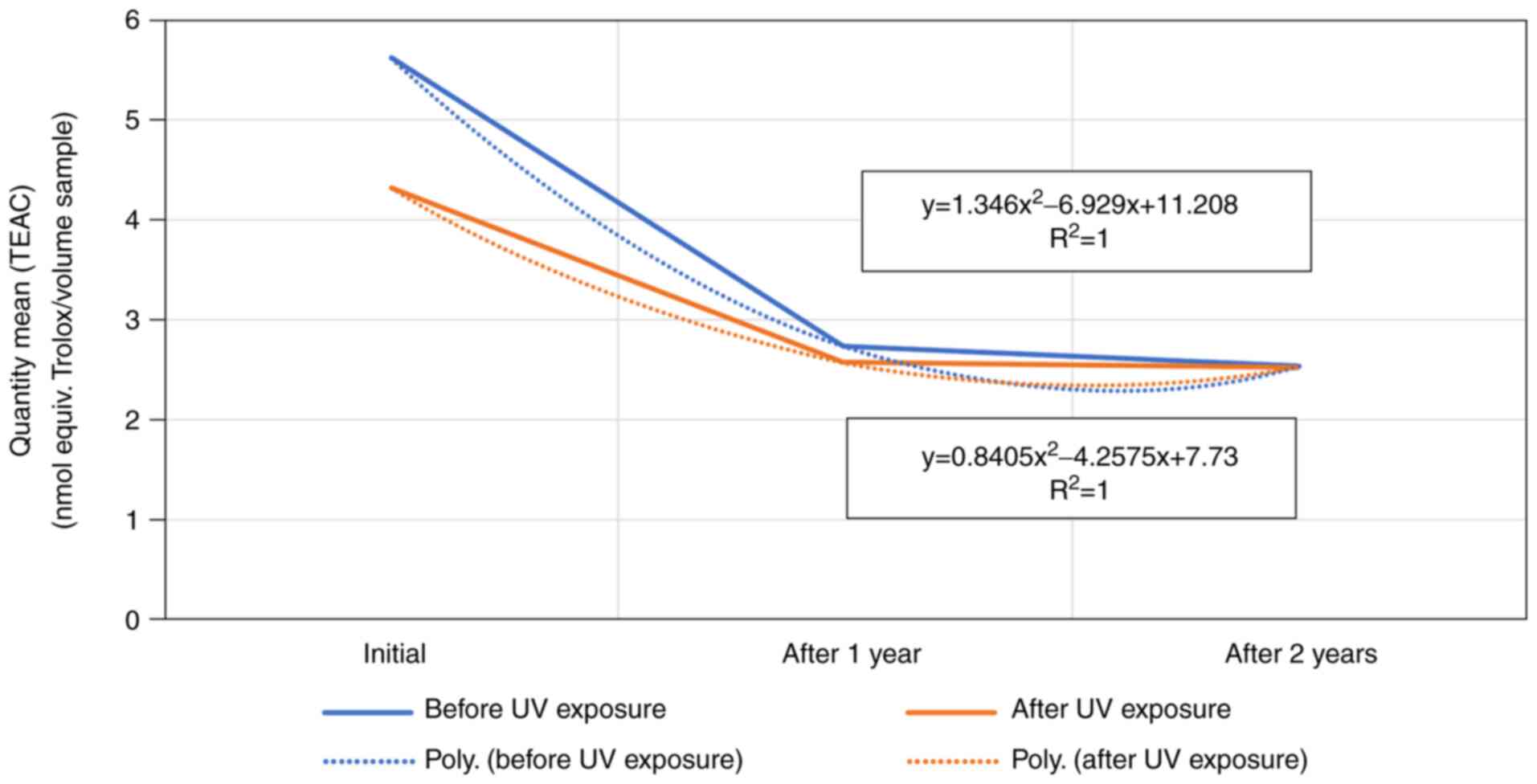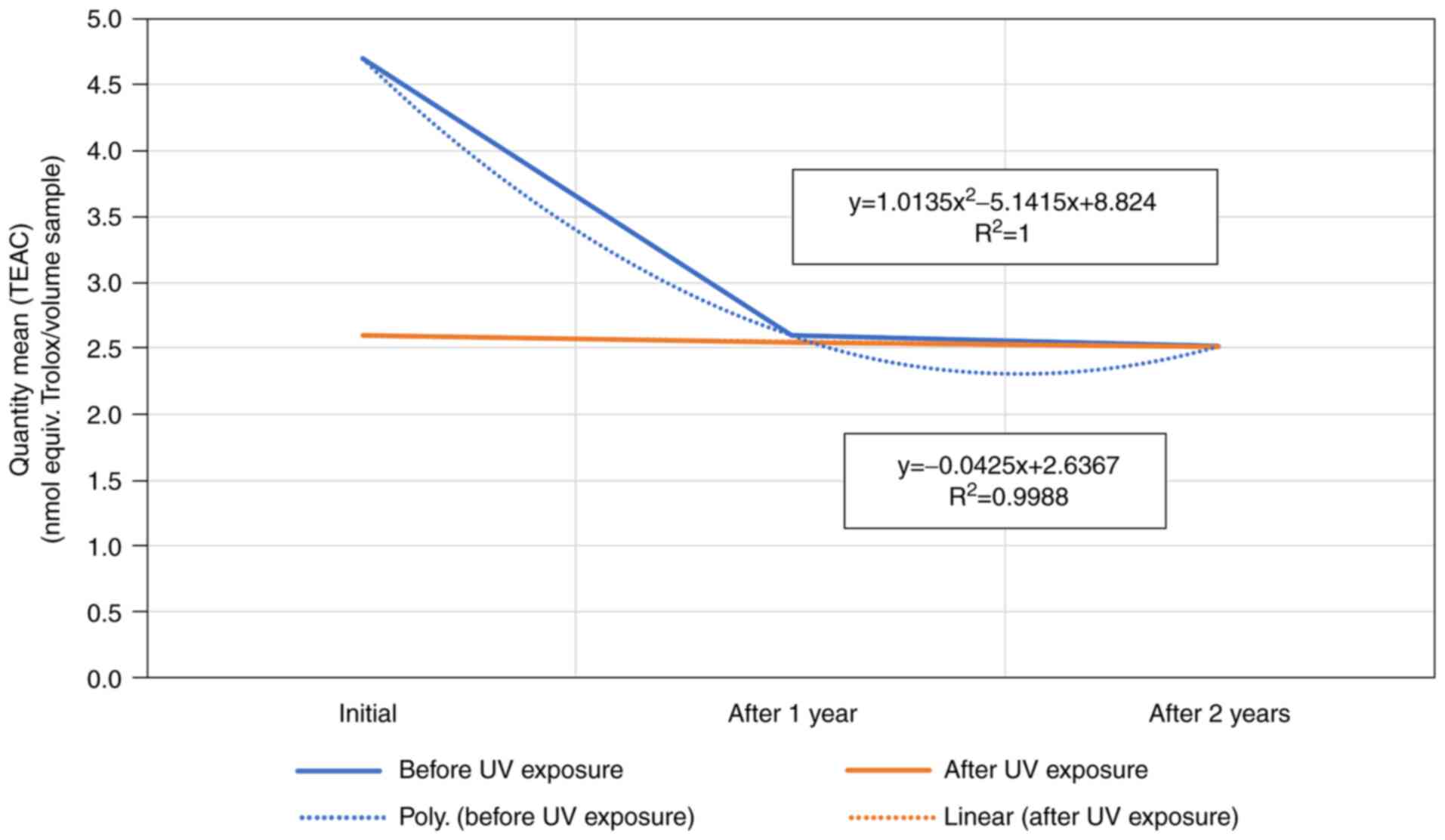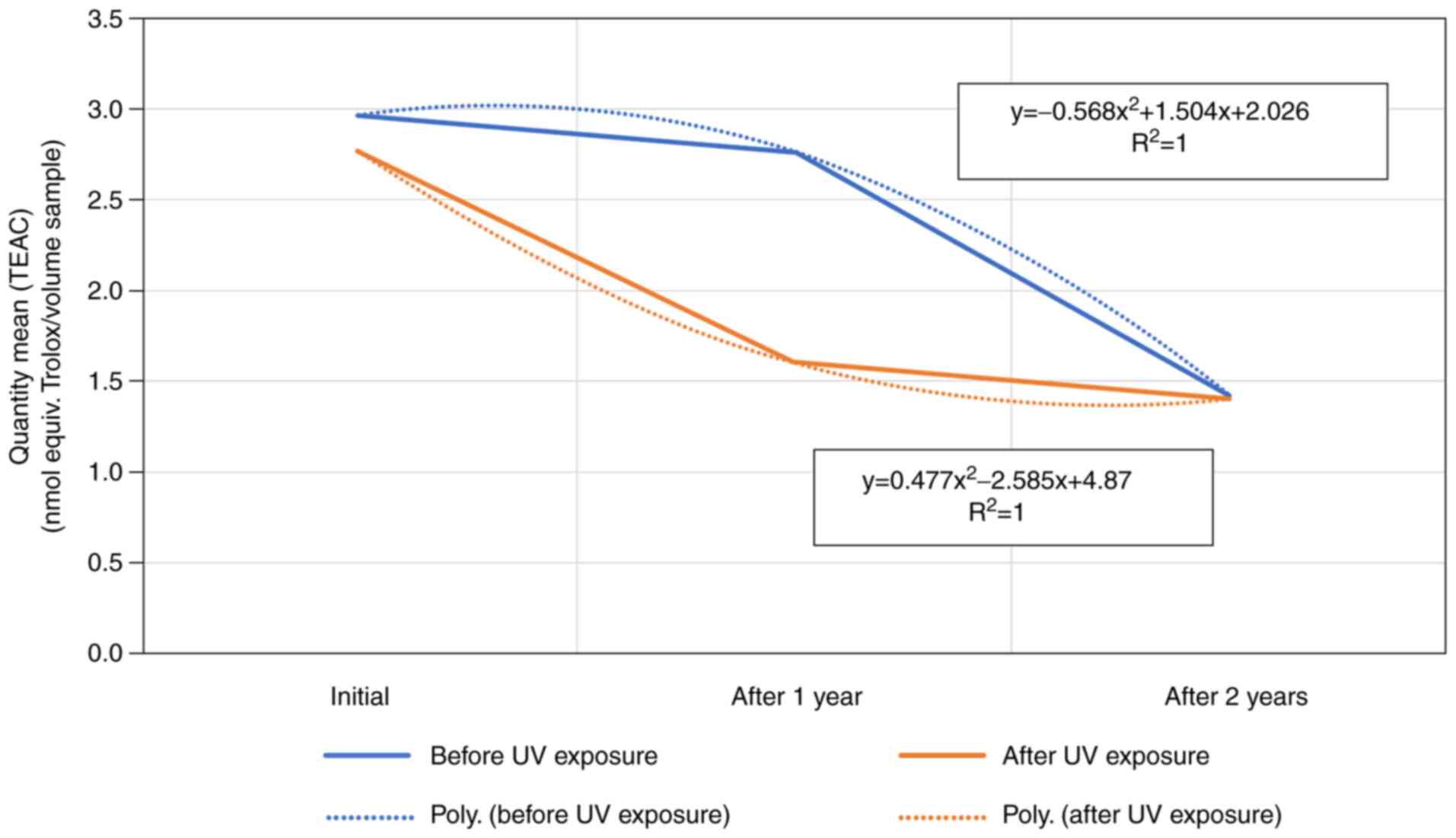|
1
|
Mehra D and Galor A: Digital screen use
and dry eye: A review. Asia Pac J Ophthalmol (Phila). 9:491–497.
2020.PubMed/NCBI View Article : Google Scholar
|
|
2
|
Savini G, Prabhawasat P, Kojima T,
Grueterich M, Espana E and Goto E: The challenge of dry eye
diagnosis. Clin Ophthalmol. 2:31–55. 2008.PubMed/NCBI View Article : Google Scholar
|
|
3
|
Salmon J: Kanski's Clinical Ophthalmology:
A Systematic Approach. 9th edition. Elsevier, pp190-230, 2019.
|
|
4
|
Nelson JD: Dry eye. Br J Ophthalmol.
81(426)1997.PubMed/NCBI View Article : Google Scholar
|
|
5
|
Javadi MA and Feizi S: Dry eye syndrome. J
Ophthalmic Vis Res. 6:192–198. 2011.PubMed/NCBI
|
|
6
|
McMonnies CW: Why the symptoms and
objective signs of dry eye disease may not correlate. J Optomol.
14:3–10. 2021.PubMed/NCBI View Article : Google Scholar
|
|
7
|
de Araújo DML and Galera PD: Ocular
lubricants: What is the best choice? Ciência Rural. 46:2055–2063.
2016.
|
|
8
|
Rouen PA and White ML: Dry eye disease:
Prevalence, assessment, and management. Home Health Now. 36:74–83.
2018.PubMed/NCBI View Article : Google Scholar
|
|
9
|
Phadatare SP, Momin M, Nighojkar P,
Askarkar S and Singh KK: A comprehensive review on dry eye disease:
Diagnosis, medical management, recent developments, and future
challenges. Adv Pharm J. 2015:1–12. 2015.
|
|
10
|
Aragona P, Giannaccare G, Mencucci R,
Rubino P, Cantera E and Rolando M: Modern approach to the treatment
of dry eye, a complex multifactorial disease: A.P.I.C.A.S.S.O.
board review. Br J Ophthalmol. 105:446–453. 2021.PubMed/NCBI View Article : Google Scholar
|
|
11
|
Shiraishi A and Sakane Y: Assessment of
dry eye symptoms: Current trends and issues of dry eye
questionnaires in Japan. Invest Ophthalmol Vis Sci. 59:DES23–DES28.
2018.PubMed/NCBI View Article : Google Scholar
|
|
12
|
Lin H and Yiu SC: Dry eye disease: A
review of diagnostic approaches and treatments. Saudi J Ophthalmol.
28:173–181. 2014.PubMed/NCBI View Article : Google Scholar
|
|
13
|
Pucker AD, Ng SM and Nichols JJ: Over the
counter (OTC) artificial tear drops for dry eye syndrome. Cochrane
Database Syst Rev. 2(CD009729)2016.PubMed/NCBI View Article : Google Scholar
|
|
14
|
She Y, Li J, Xiao B, Lu H, Liu H, Simmons
PA, Vehige JG and Chen W: Evaluation of a novel artificial tear in
the prevention and treatment of dry eye in an animal model. J Ocul
Pharmacol Ther. 31:525–530. 2015.PubMed/NCBI View Article : Google Scholar
|
|
15
|
Jurja S, Negreanu-Pirjol T and
Negreanu-Pirjol BS: Comparative antioxidant activity of some ocular
tissue lubricants from Romanian market. In: Proceedings of the 17th
International Multidisciplinary Scientific GeoConferences-SGEM,
Albena, pp593-600, 2017.
|
|
16
|
Jurja S, Negreanu-Pirjol T,
Negreanu-Pirjol B-S and Roncea FN: UV Radiations influence on the
total antioxidant capacity of artificial tears (ocular lubricant).
In: Proceedings of the 16th International Multidisciplinary
Scientific GeoConferences-SGEM, Sofia, pp395-402, 2016.
|
|
17
|
Jurja S, Negreanu-Pirjol T, Lepadatu AC,
Sirbu R and Negreanu-Pirjol BS: Different artificial tears,
different eyes. How to choose? In: Proceedings of the 15th
International Multidisciplinary Scientific GeoConferences-SGEM,
Albena, pp405-410, 2015.
|
|
18
|
Jurja S, Coman M and Hincu MC: The
ultraviolet influence upon soft eye tissues. Rom J Morphol Embryol.
58:45–52. 2017.PubMed/NCBI
|
|
19
|
Jurja S, Hincu M, Dobrescu MA, Golu AE,
Balasoiu AT and Coman M: Ocular cells and light: Harmony or
conflict? Rom J Morphol Embryol. 55:257–261. 2014.PubMed/NCBI
|
|
20
|
Buckley RJ: Assessment and management of
dry eye disease. Eye. 32:200–203. 2018.PubMed/NCBI View Article : Google Scholar
|
|
21
|
Hantera MM: Trends in dry eye disease
management worldwide. Clin Ophthalmol. 15:165–173. 2021.PubMed/NCBI View Article : Google Scholar
|
|
22
|
Tomlinson A, Madden LC and Simmons PA:
Effectiveness of dry eye therapy under conditions of environmental
stress. Curr Eye Res. 38:229–236. 2013.PubMed/NCBI View Article : Google Scholar
|
|
23
|
Simpson TL, Situ P, Jones LW and Fonn D:
Dry eye symptoms assessed by four questionnaires. Optom Vis Sci.
85:692–699. 2008.PubMed/NCBI View Article : Google Scholar
|
|
24
|
Willshire C, Buckley RJ and Bron AJ:
Estimating basal tear osmolarity in normal and dry eye subjects.
Cont Lens Anterior Eye. 41:34–46. 2018.PubMed/NCBI View Article : Google Scholar
|
|
25
|
Choy CK, Cho P and Benzie IF: Antioxidant
content and ultraviolet absorption characteristics of human tears.
Optom Vis Sci. 88:507–511. 2011.PubMed/NCBI View Article : Google Scholar
|
|
26
|
Rieger G: Anti-oxidative capacity of
various artificial tear preparations. Graefes Arch Clin Exp
Ophthalmol. 239:222–226. 2001.PubMed/NCBI View Article : Google Scholar
|
|
27
|
Abelson M, Ousler G and Stein L: Oxidative
stress reduction for dry eye. Antioxidants' effects on harmful
reactive oxygen species may be helpful in the fight against dry
eye. Rev Ophthalmol. 33:96–115. 2016.
|
|
28
|
Daxer A, Blumthaler M, Schreder J and Ettl
A: Effectiveness of eye drops protective against ultraviolet
radiation. Ophthalmic Res. 30:286–290. 1998.PubMed/NCBI View Article : Google Scholar
|
|
29
|
Ribeiro MVMR, Barbosa FT, Ribeiro LEF,
Sousa-Rodrigues CF and Ribeiro EAN: Effectiveness of using
preservative-free artificial tears versus preserved lubricants for
the treatment of dry eyes: A systematic review. Arq Bras Oftalmol.
82:436–445. 2019.PubMed/NCBI View Article : Google Scholar
|
|
30
|
Seen S and Tong L: Dry eye disease and
oxidative stress. Acta Ophthalmol. 96:e412–e420. 2018.PubMed/NCBI View Article : Google Scholar
|
|
31
|
Jurja S, Pirjol TN, Costea DO and Pirjol
BSN: Correlation between effectiveness and antioxidant activity of
some anti cataract eye drops. Rev Chim (Bucharest). 67:1004–1007.
2016.
|
|
32
|
Jurja S, Negreanu-Pirjol T, Roncea F,
Negreanu-Pirjol BS, Sîrbu R, Lepadatu AC and Miresan H: Correlation
between antioxidant activity of vegetal supplement and age related
maculopathy. In: Proceedings of the 14th International
Multidisciplinary Scientific GeoConferences, Surveying Geology
& mining Ecology Management-SGEM, Albena, pp321-328, 2014.
|
|
33
|
Jurja S, Negreanu-Pirjol T, Roncea F,
Negreanu-Pirjol BS, Paraschiv G and Miresan H: Aging effect on
ocular tissues of antioxidant vegetal supplements from Romanian
market. In: Proceedings of the 14th International Multidisciplinary
Scientific GeoConferences ‘Surveying Geology & mining Ecology
Management-SGEM, Albena, pp225-230, 2014.
|
|
34
|
Manjunath M, Anjali Gowda DV, Kumar P,
Srivastava A, Osmani RA, Shinde C and S Hatna: Guar Gum and its
pharmaceutical and biomedical applications. Adv Sci Eng Med.
8:1–14. 2016.
|
|
35
|
Bouyer E, Mekhloufi G, Rosilio V,
Grossiord JL and Agnely F: Proteins, polysaccharides, and their
complexes used as stabilizers for emulsions: Alternatives to
synthetic surfactants in the pharmaceutical field? Int J Pharm.
436:359–378. 2012.PubMed/NCBI View Article : Google Scholar
|
|
36
|
Wu H, Du S, Lu Y, Li Y and Wang D: The
application of biomedical polymer material hydroxy propyl methyl
cellulose (HPMC) in pharmaceutical preparations. J Chem Pharm Res.
6:155–160. 2014.
|
|
37
|
Al-Tabakha MM: HPMC capsules: Current
status and future prospects. J Pharm Pharm Sci. 13:428–442.
2010.PubMed/NCBI View
Article : Google Scholar
|
|
38
|
Li CL, Martini LG, Ford JL and Roberts M:
The use of hypromellose in oral drug delivery. J Pharm Pharmacol.
57:533–546. 2005.PubMed/NCBI View Article : Google Scholar
|
|
39
|
Garrett Q, Simmons PA, Xu S, Vehige J,
Zhao Z, Ehrmann K and Willcox M: Carboxymethylcellulose binds to
human corneal epithelial cells and is a modulator of corneal
epithelial wound healing. Invest Ophthalmol Vis Sci. 48:1559–1567.
2007.PubMed/NCBI View Article : Google Scholar
|
|
40
|
Karabinos JV and Hindert M:
Carboxymethylcellulose. Adv Carbohydr Chem. 9:285–302.
1954.PubMed/NCBI View Article : Google Scholar
|
|
41
|
Bruix A, Adan A and Casaroli-Marano RP:
Efficacy of sodium carboxymethylcellulose in the treatment of dry
eye syndrome. Arch Soc Esp Oftalmol. 81:85–92. 2006.PubMed/NCBI View Article : Google Scholar
|
|
42
|
Yao K, Bao Y, Ye J, Lu Y, Bi H, Tang X,
Zhao Y, Zhang J and Yang J: Efficacy of 1% carboxymethylcellulose
sodium for treating dry eye after phacoemulsification: Results from
a multicenter, open-label, randomized, controlled study. BMC
Ophthalmol. 15(28)2015.PubMed/NCBI View Article : Google Scholar
|
|
43
|
Cohen S, Martin A and Sall K: Evaluation
of clinical outcomes in patients with dry eye disease using
lubricant eye drops containing polyethylene glycol or
carboxymethylcellulose. Clin Ophthalmol. 8:157–164. 2014.PubMed/NCBI View Article : Google Scholar
|
|
44
|
Labetoulle M, Chiambaretta F, Shirlaw A,
Leaback R and Baudouin C: Osmoprotectants, Carboxymethylcellulose
and hyaluronic acid multi-ingredient eye drop: A randomised
controlled trial in moderate to severe dry eye. Eye (Lond).
31:1409–1416. 2017.PubMed/NCBI View Article : Google Scholar
|
|
45
|
Popov I and Lewin G: Antioxidative
homeostasis: Characterization by means of chemiluminescent
technique. Methods Enzymol. 300:437–456. 1999.PubMed/NCBI View Article : Google Scholar
|
|
46
|
Popov IN and Lewin G:
Photochemiluminescent detection of antiradical activity; IV:
Testing of lipid-soluble antioxidants. J Biochem Biophys Methods.
31:1–8. 1996.PubMed/NCBI View Article : Google Scholar
|
|
47
|
Popov IN and Lewin G: Photosensitized
Chemiluminescence. Labo. 8:498–527. 1997.
|
|
48
|
Dinardo JC, Lewis JA, Neudecker BA and
Maibach HI: Antioxidants compared in a new protocol to measure
protective capacity against oxidative stress-part II1. J
Am Acad Dermatol. 50 (Suppl)(P30)2004.
|
|
49
|
Pegg RB, Amarowicz R, Naczk M and Shahidi
F: Photochem for determination of antioxidant capacity of plant
extract,. 2007, ACS Symposium Series 956:140-158, Publisher:
American Chemical Society, In book: Antioxidant Measurement and
Applications, pp.140-158, DOI:10.1021/bk-2007-0956.ch011.
|
|
50
|
Bartollino S, Palazzo M, Semeraro F,
Parolini B, Caruso C, Merolla F, Guerra G and Costagliola C:
Effects of an antioxidant protective topical formulation on retinal
tissue of UV-exposed rabbits. Int Ophthalmol. 40:925–933.
2020.PubMed/NCBI View Article : Google Scholar
|
|
51
|
Palazzo M, Vizzarri F, Ondruška L, Rinaldi
M, Pacente L, Guerra G, Merolla F, Caruso C and Costagliola C:
Corneal UV protective effects of a topical antioxidant formulation:
A pilot study on in vivo rabbits. Int J Mol Sci.
21(5426)2020.PubMed/NCBI View Article : Google Scholar
|
|
52
|
Ivanov IV, Mappes T, Schaupp P, Lappe C
and Wahl S: Ultraviolet radiation oxidative stress affects eye
health. J Biophotonics. 11(e201700377)2018.PubMed/NCBI View Article : Google Scholar
|
|
53
|
Cejka C and Cejkova J: Oxidative stress to
the cornea, changes in corneal optical properties, and advances in
treatment of corneal oxidative injuries. Oxid Med Cell Longev.
2015(591530)2015.PubMed/NCBI View Article : Google Scholar
|















